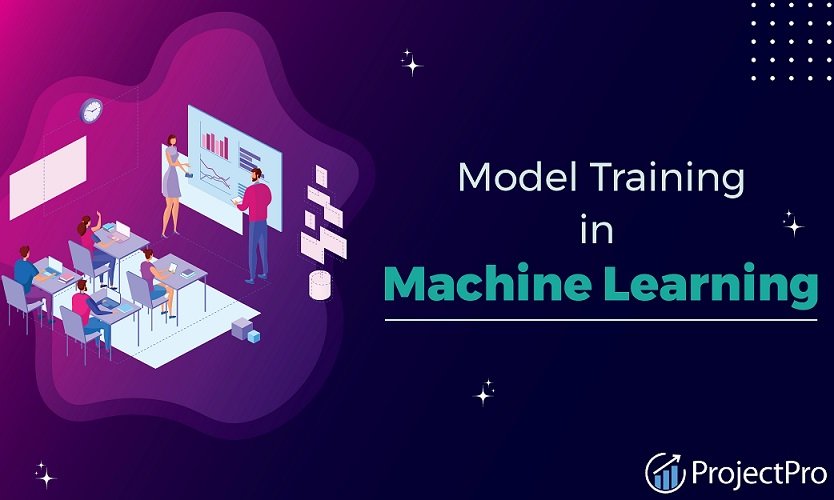
A Complete Guide to Understanding Model Training in Machine Learning
Explore a complete guide to understanding model training in machine learning, covering data preparation, algorithms, and evaluation techniques.
Model training in machine learning can feel complex at first glance. It draws you into a world where data meets decision-making in precise ways. The journey opens doors to understanding how machines learn from patterns.
Curiosity grows as you explore the steps that shape a model’s output. Each stage leads to results that can surprise even experts. The more you learn, the more you want to dive deeper into its process.
In this article, we will discuss everything you need to know about model training in machine learning, covering data preparation, algorithms, and evaluation techniques.
The Role of Data Quality in Building Effective Models
Data quality is the foundation of any strong machine learning model. High-quality data allows algorithms to detect meaningful patterns with greater accuracy. When the data is clean and relevant, the model can make better predictions.
Errors, inconsistencies, or missing values in data can lead to unreliable results. This weakens the model’s ability to generalize well in new situations. Ensuring accuracy from the start saves time and reduces costly adjustments later.
Structured and consistent datasets give the training process a stronger base. These datasets support models in delivering results that align with expectations. Quality at the input stage directly impacts how well the model performs later.
Essential Steps in Preparing Data for Training
Data preparation begins with collecting sources that align with the model’s goals. It’s vital to keep formats consistent so the system can process them correctly. Removing unnecessary data helps prevent confusion during training.
Once collected, the data must be cleaned to remove errors and duplicates. This helps maintain stability during the learning process. Proper cleaning supports better accuracy in predictions.
The last step is transforming the data into a structure that the algorithm can use. This may involve scaling values or encoding categories. Well-prepared data makes it easier for the model to learn effectively.
Choosing the Right Machine Learning Algorithm
Selecting an algorithm depends on the problem type and the data available. Classification, regression, or clustering tasks require different approaches. Matching the algorithm to the task increases training success.
Some algorithms perform better with large datasets, while others work well with smaller ones. This choice also depends on the complexity of relationships in the data. The right match can greatly improve outcomes.
Evaluating the algorithm’s compatibility early prevents wasted resources. It also ensures smoother performance during testing. This decision is one of the most important steps in model design.
Understanding Training, Validation, and Test Splits
Splitting data into training, validation, and test sets ensures balanced evaluation. The training set teaches the model, while the validation set checks its progress. The test set measures performance on unseen data.
Without proper splits, the model may memorize rather than learn. This leads to poor generalization in real-world situations. Balanced splits protect against biased results.
The ratio of these splits can vary based on dataset size and goals. However, all three sets serve distinct purposes. Their combined use supports a fair assessment of the model.
Feature Selection and Engineering for Better Accuracy
Feature selection removes irrelevant or weak predictors from the data. This reduces noise and helps the model focus on important variables. The result is often a faster and more accurate system.
Feature engineering involves creating new variables from existing data. This can reveal hidden patterns that improve learning. Properly engineered features often boost model performance.
The process requires understanding both the data and the problem being solved. By refining the input, the algorithm receives stronger signals. This directly supports more accurate predictions.
Hyperparameter Tuning and Optimization Strategies
Hyperparameters control how the algorithm learns and adapts. Adjusting them can greatly influence model accuracy. This process is often done through testing multiple configurations.
Techniques such as grid search and random search explore different settings. These methods identify combinations that improve results. Automation tools can speed up this process for large datasets.
Careful tuning can lead to significant gains in accuracy. It can also reduce training time and resource usage. The goal is to find the balance that optimizes performance.
Evaluating Model Performance with Key Metrics
Evaluating a model involves measuring its accuracy, precision, recall, and other metrics. These values reveal how effectively the model handles different cases. Choosing the right metrics ensures fair evaluation.
For classification tasks, confusion matrices help visualize predictions. They show where the model succeeds and where it struggles. This helps guide adjustments for better performance.
Evaluation must be done on data not used for training. This ensures a realistic measure of success. It also protects against overestimating the model’s capabilities.
Avoiding Overfitting and Underfitting in Model Training
Overfitting happens when a model memorizes training data instead of learning patterns. This leads to poor performance on new data. Underfitting occurs when the model fails to capture important relationships.
Regularization techniques can help prevent overfitting. These methods limit complexity without harming accuracy. Adjusting model depth or features can also improve balance.
Finding the right balance is key to strong results. Both extremes reduce a model’s ability to generalize. Ongoing monitoring helps maintain stability over time.
Best Practices for Continuous Model Improvement
Continuous improvement involves monitoring performance and updating the model as needed. This ensures it adapts to new data and conditions. Small changes can lead to big gains in accuracy.
Using advanced evaluation methods like cross entropy loss can provide more reliable insights. It allows better comparison between models and identifies improvement areas. This supports long-term stability in results.
Keeping track of how well the model performs helps guide decisions. Regular review ensures issues are addressed quickly. This makes the system more dependable over time.
Strengthening Skills Through Model Training in Machine Learning
Model training in machine learning shapes how systems learn and adapt. Each decision in the process influences the final accuracy. A well-trained model reflects careful planning from start to finish.
The more precise the approach, the better the results in real-world use. Small improvements can lead to big differences in reliability. Applying these principles builds stronger, smarter models.
Would you like to explore more informative articles such as this one? Browse around the rest of our blog to see what interests you.


